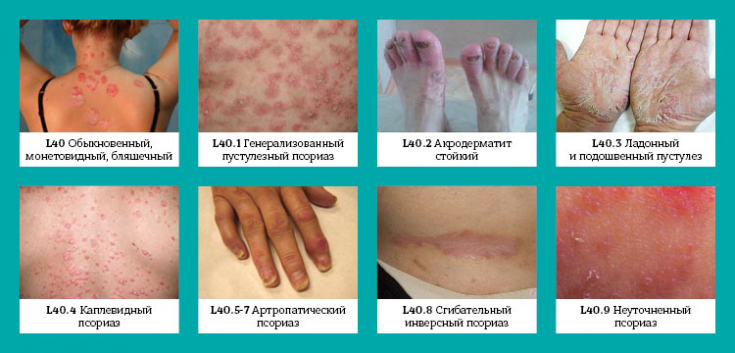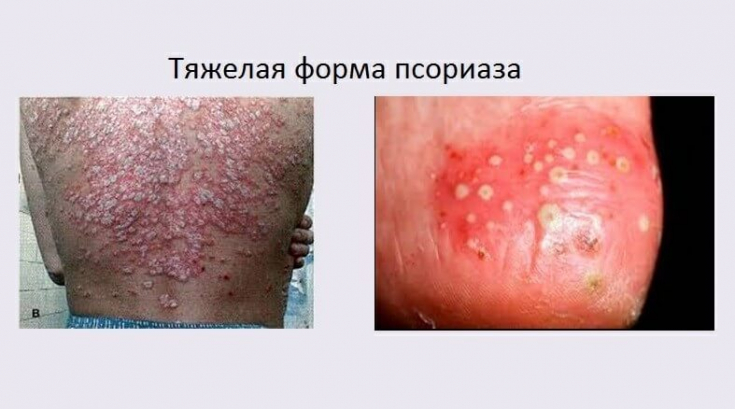In psoriasis treatment protocols, in addition to local therapy, the use of immunosuppressive agents is included. This is especially true in severe forms of the disease and complications in the form of psoriatic arthritis. But in addition to a high therapeutic effect, cytostatics also have certain side effects, which requires careful monitoring by the doctor when prescribing drugs.
Find out in the article on estet-portal.com about the main immunosuppressive drugs used to treat psoriasis, the main treatment regimens, as well as the criteria for the effectiveness of the prescribed therapy.
- Use of methotrexate for the treatment of psoriasis
- Use of cyclosporine for the treatment of psoriasis
- Combined treatments for psoriasisa
Use of methotrexate for the treatment of psoriasis
One of the most common cytostatics for the treatment of psoriasis is methotrexate. Its use is possible both in the form of monotherapy, and in combination with other drugs.
Follow us on Instagram!
Most commonly, methotrexate is used to treat psoriasis in the following regimens:
- Initial dose: usually 7.5-15 mg/week orally or topically (grade B), may be an option for severe psoriasis at an initial dose of 17.5 mg/week for subcutaneous injection with escalation doses up to 22.5 mg/week after 8 weeks if the patient has not reached PASI 50 (Grade A).
It is not recommended to prescribe the drug to evaluate the effectiveness of the treatment of psoriasis in low concentrations.
- Maintenance dose: 5-25 mg/week depending on efficacy and tolerability (Grade B), the lowest effective maintenance dose recommended, folic acid supplementation 5 mg/week 24 hours after methotrexate administration to reduce toxicity ( grade B)
Lipids against psoriasis: a promising direction in the treatment of the disease
It is not recommended to stop treatment after a saturation dose has been reached. If methotrexate is well tolerated, further use is necessary. The onset of the clinical effect is observed within 4-8 weeks (W). The final assessment of the effectiveness of methotrexate for the treatment of psoriasis is possible at the 12-16th week of treatment (W12-16).
Use of cyclosporine for the treatment of psoriasis
The use of cyclosporine for the treatment of psoriasis is recommended in the following regimens:
- Initial dose: 2.5 mg/kg/day orally in two divided doses − morning and evening (grade A). In the absence of comorbidity, a dose of 5 mg/kg is possible for a rapid therapeutic effect (Grade B); in the absence of an adequate response to the initial dose within W4-8 or if a rapid therapeutic effect is required, the dose can be increased to a maximum of 5 mg / kg (grade B), in overweight patients, it is desirable to achieve a decrease in body weight (grade B).
- Maintenance treatment of psoriasis during remission: intermittent therapy (2-4 months of treatment) or continuous use of the drug at the lowest effective dose depending on the clinical situation (grade B), a slow reduction in the dose of cyclosporine is possible in the absence of signs of relapse of psoriasis (grade B), it is desirable not to use cyclosporine for continuous treatment for more than 2 years if the disease is mild or moderate, but other therapy cannot be used; in such cases, an additional consultation with a nephrologist is also necessary (Grade C).
Peculiarities of psoriasis therapy in patients of different ages

Primary contraindications for the use of cyclosporine for the treatment of psoriasis: impaired renal function, uncontrolled hypertension, severe infectious disease, history of neoplasms, except for cured basal cell and squamous cell carcinoma in situ .
Combined treatments for psoriasis
Systemic treatment of psoriasis is also recommended to include phototherapy in patients with any form of the disease that meets one of the following criteria:
- Patients with moderate or severe psoriasis who meet the following criteria: more than 10% of the body surface area (BSA) on the skin or meets the Psoriasis Severity Index (PASI)> 10 points and/or Dermatological Quality of Life Index (DLQI) > 10 points.
- A patient's condition that causes a significant deterioration in physical health and social comfort, or causes psychological disorders and the development of generalized anxiety-depressive conditions.
- A localized variant of the disease that does not respond to topical treatments and is associated with significant physical activity and functional impairment and/or a high level of skin involvement, such as severe nail disease or lesions in areas of high exertion (such as the palms of the hands and soles, scalp, face and articular surfaces).

Evolution of treatment approaches based on the causes of psoriasis
The authors of the developed prescriptions believe that new algorithms of treatment tactics, taking into account scientific data and the emergence of highly effective new drugs for the treatment of psoriasis, in particular the development of drugs for immunotherapy of psoriasis, will make it possible to more effectively provide assistance to severe psoriasis patients.
These recommendations, first of all, will allow rational use of systemic therapy in patients with psoriasis not only by dermatologists, but also by those medical professionals who are involved in the treatment of these patients: rheumatologists, general practitioners and nephrologists.
Handoplantar psoriasis: how to correctly diagnose







Add a comment